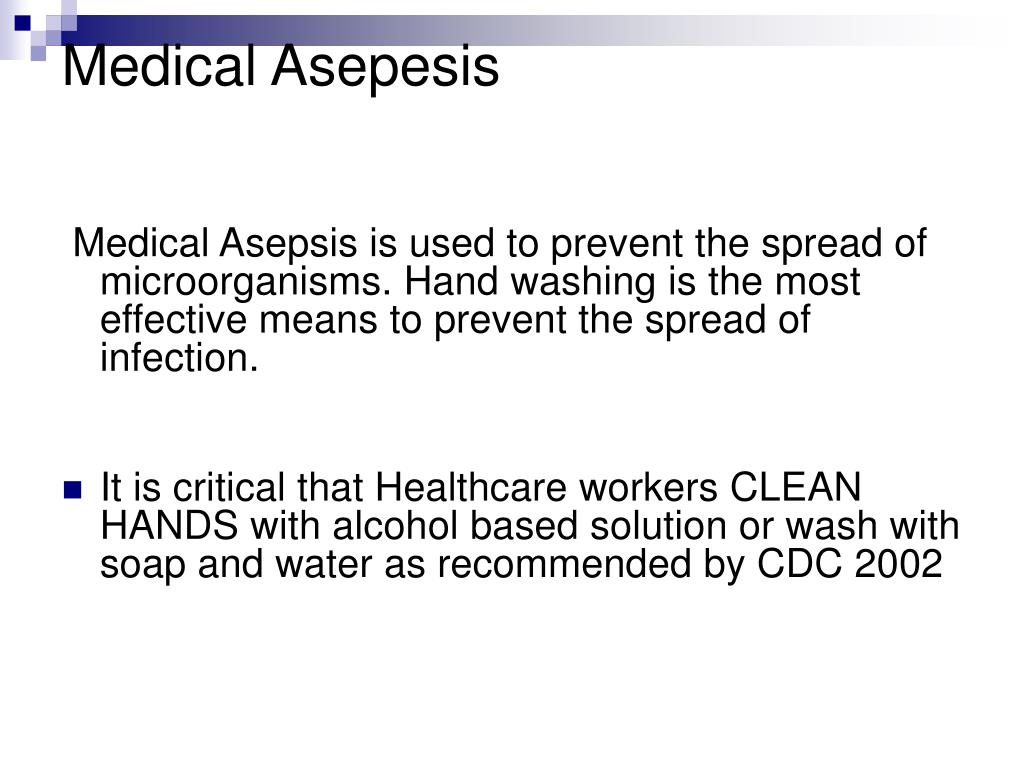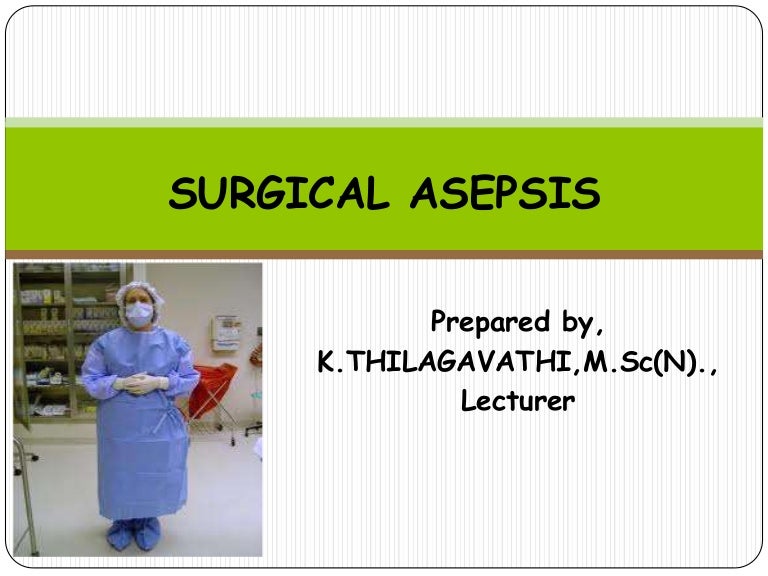
Surgical asepsis is a more complex process, including procedures to eliminate microorganisms from an area (thus creating an aseptic environment), and is practised in operating theatres and for invasive procedures, such as the insertion of a central venous catheter (CVC) (NICE 2012).Īntisepsis – is the removal / reduction of microbes from the susceptible site this is usually carried out by using an antiseptic solution. Medical asepsis aims to minimise the risk of contamination by microorganisms, and prevent their transmission by applying standard principles of infection prevention, including decontaminating hands, use of PPE, maintaining an aseptic area, and not touching susceptible sites or the surface of invasive devices (NICE 2012) Aseptic techniques are those aimed at the elimination of all infectious micro-organisms during procedures” (Humes and Lobo 2009). Staff are personally responsible to ensure that they have the required knowledge and skill to undertake procedures that require asepsis.Īsepsis is defined as “the absence of infectious organisms. Only staff that have received appropriate training can carry out a clinical procedure which requires asepsis in LTHT. This guideline does not include procedures practised by clinical staff in operating theatres and treatment areas which may require contact with a sterile body site. It applies specifically to types of procedures included under asepsis which aims to reduce the number of organisms and prevents their spread. This Guideline sets out the expectations in practice of all clinical LTHT staff when undertaking practices requiring the use of an aseptic technique.

Asepsis is an essential component of infection prevention and control practice to protect patients from potential HCAIs (Loveday et al, 2014). Patients have a right to be protected from avoidable infection and healthcare workers have a duty to
#Principles of medical asepsis code
The Health and Social Care Act 2008 updated 2012 is a Code of Practice for health and adult social care on the prevention and control of infections and related guidance stipulates that NHS bodies and adult social care providers must have core policies in place, including aseptic technique, in relation to preventing and controlling the risks of HCAI’s. Please check the patients allergy status, as they may be allergic to Chlorhexidine, and alternative ( Providine iodine) solution will be required.īe aware: Chlorhexidine is considered an environmental allergen Summary of Guideline Appendix 1 - Guidelines for undertaking an Aseptic technique.


Given that the role of the perioperative nurse is paramount in maintaining surgical integrity, and enhancing positive patient outcomes, strict adherence to surgical asepsis is vital to prevent SSIs and other complications. The findings showed areas of compliance and noncompliance with the principles of asepsis. Perioperative scrub RNs were less likely to wear shoe covers during surgical procedures than ORTs (M = 3.42 and 4.17 mdn = 3.00 and 5.00 respectively p =. The purpose of this study was to examine the practices of perioperative scrub personnel with surgical asepsis.Ī sizable percentage of participants indicated that they never or rarely observe breaches in the sterile field during surgery with regards to open suction drain systems (46.6% n = 41), closed suction drain systems (46.6% n = 41), suture material (39.7% n = 35), use of surgical instruments (37.5% n = 33), and prosthetic implants (56.8% n = 50). Perioperative nurses are expected to demonstrate strict adherence with asepsis principles to prevent surgical site infections (SSIs) as breaching of these principles poses a serious risk of infection to surgical patients.Ī descriptive survey was conducted with a convenience sample of 87 perioperative personnel to describe self-reported compliance with the principles of asepsis during surgery.


 0 kommentar(er)
0 kommentar(er)
